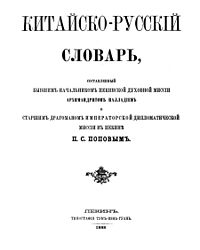- Dragoman
-
For other uses, see Dragoman (disambiguation).
 Plate from The Crescent and the Cross by Elliot Warburton entitled "Encampment at Baalbec, lady and dragoman in foreground."
Plate from The Crescent and the Cross by Elliot Warburton entitled "Encampment at Baalbec, lady and dragoman in foreground."
A dragoman was an interpreter, translator and official guide between Turkish, Arabic, and Persian-speaking countries and polities of the Middle East and European embassies, consulates, vice-consulates and trading posts. A dragoman had to have a knowledge of Arabic, Turkish, and European languages.
The position took particular prominence in the Ottoman Empire, where demand for the mediation provided by dragomans is said to have been created by the resistance on the part of the Muslim Ottomans to learn the languages of non-Muslim nations. The office incorporated diplomatic as well as linguistic duties — namely, in the Porte's relation with Christian countries — and some dragomans thus came to play crucial roles in Ottoman politics. The profession tended to be dominated by ethnic Greeks, including the first Ottoman Grand Dragoman Panayotis Nicosias, and Alexander Mavrocordatos.
It became customary that most hospodars of the Phanariote rule (roughly 1711–1821) over the Danubian Principalities (Moldavia and Wallachia) would previously have occupied this Ottoman office, a fact which did not prevent many of them from joining conspiracies that aimed to overthrow Turkish rule over the area.
Contents
Etymology and variants
In Arabic the word is ترجمان (tarjumān), in Turkish tercüman. Deriving from the Semitic quadriliteral root t-r-g-m, it appears in Akkadian as "targumannu," and in Aramaic as targemana. Hebrew makes a distinction between מתרגם (metargem) - referring to a translator of written texts - and מתורגמן (meturgeman) referring to an interpreter of spoken conversation or speeches. The latter is obviously more closely related to the other languages mentioned, though both are derived from the same Semitic root.
During the Middle Ages the word entered European languages: in Middle English as dragman, in Old French as drugeman, in Middle Latin as dragumannus, and in Middle Greek δραγομάνος. Later European variants include the German trutzelmann, the French trucheman or truchement (in modern French it is drogman), the Italian turcimanno, and the Spanish trujamán, trujimán and truchimán; these variants point to a Turkish or Arabic word "turjuman", with different vocalization. In Hungarian it becomes tolmács, which is further loaned into German as Dolmetscher, the standard present day word for "translator of spoken language". Webster's Dictionary of 1828 lists dragoman as well as the variants drogman and truchman in English.
The family name of Franjo Tudjman, the first post-Communist President of Croatia, indicates that one of his ancestors might have been a dragoman.
See also
Notes
- ^ Hamilton, Alastair; Groot, Alexander H. de; Boogert, Maurits H. van den (2000). Friends and rivals in the East: studies in Anglo-Dutch relations in the Levant from the seventeenth to the early nineteenth century. BRILL. p. 230ff. ISBN 9789004118546. http://books.google.com/books?id=tdTriSqIW3AC&pg=PA230.
References
- Bernard Lewis, From Babel to Dragomans: Interpreting the Middle East, Oxford University Press, London and New York, 2004
- Philip Mansel, "Viziers and Dragomans," in Constantinople: City of the World's Desire 1453-1924, London, 1995. pp. 133-162
- Marie de Testa, Antoine Gautier, "Drogmans et diplomates européens auprès de la Porte Ottomane", in Analecta Isisiana, vol. lxxi, Les Éditions ISIS, Istanbul, 2003
- Frédéric Hitzel (ed.), Istanbul et les langues Orientales, Varia Turca, vol. xxxi, L'Harmattan, Paris and Montreal, 1997
External links
- Dragoman in 1911 Britannica

This Ottoman Empire-related article is a stub. You can help Wikipedia by expanding it.


